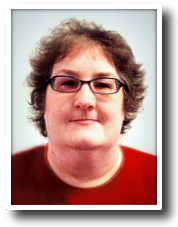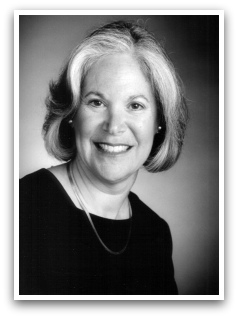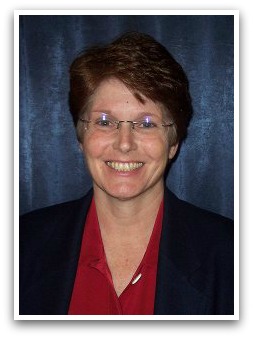 Kimberly Orr, DVM, PhD
Kimberly Orr, DVM, PhD
Microbiologist and Senior Biologist
Chemical Biological Controls at Bureau of Industry and Security, U.S. Department of Commerce
Most life science research which is published and considered fundamental research is not subject to export license requirements in the Export Administration Regulations (EAR), administered by the Bureau of Industry and Security (BIS) of the Department of Commerce (DOC), or to export license requirements in the International Traffic in Arms Regulations (ITAR), administered by the Directorate of Defense Trade Controls (DDTC) of the Department of State. However, recent events in collaborative research on H5N1 avian influenza have emphasized the importance of evaluating possible unintended results in research. Read More »
 Susan A. Ehrlich is a retired judge of the Arizona Court of Appeals. A graduate of Wellesley College, she holds a J.D. and an LL.M. (biotechnology and genomics) from Arizona State University College of Law. Among her activities, she serves as a member of the National Science Advisory Board for Biosecurity and as an adjunct professor in the Department of Microbiology and Immunology, University of Texas Medical Branch – Galveston.
Susan A. Ehrlich is a retired judge of the Arizona Court of Appeals. A graduate of Wellesley College, she holds a J.D. and an LL.M. (biotechnology and genomics) from Arizona State University College of Law. Among her activities, she serves as a member of the National Science Advisory Board for Biosecurity and as an adjunct professor in the Department of Microbiology and Immunology, University of Texas Medical Branch – Galveston.
The views expressed are hers alone.
Many a trumpet has been sounded to organize the plethora of federal statutes, regulations and rules that govern life-sciences research to no real avail. This lack of response harms the United States’ scientific progress, burdening and discouraging researchers with unnecessary expenditures of time and money in order to comply with policies that too often are unnecessary, duplicative or conflicting. What is needed is the establishment of a presidential commission charged with collecting, reviewing and synthesizing this administrative glut into a single, comprehensive framework for the oversight of life-sciences research. Read More »
 Dr. Todd Kuiken
Dr. Todd Kuiken
Woodrow Wilson Center
Science and Technology Innovation Program
Despite what has been recently reported in the New York Times article, “Amateurs Are the New Fear in Creating Mutant Viruses,” the risk of the amateur do-it-yourself (DIY) or citizen science movement is little to none when it comes to biosecurity or the risk of taking a federally funded project involving H5N1 and turning it into a bio-weapon. I will discuss later some of the steps the DIYbio movement has taken to minimize any potential risks and orient itself around codes of conduct, but I wanted to take this opportunity to dispel any erroneous notions that the reason the H5N1 paper should not be published in its entirety is because of the perceived threat the DIYbio movement presents. Read More »
 Dr. Barbara Johnson
Dr. Barbara Johnson
Biosafety Biosecurity International
Applied Biosafety, the journal of the American Biological Safety Association has provided the following pre-publication release of an editorial addressing the H5N1 publication controversy, with recommendations for strengthening biosafety and biosecurity at the institutional level. It will be published in print in Applied Biosafety, in Volume 17.1 March 31, 2012.
Please view the article at the link below:
http://www.absa.org/pdf/H5N1editorial.pdf
 Dana Perkins, PhD
Dana Perkins, PhD
Chief of the Biological Weapons Nonproliferation and Counterterrorism Branch, Office of the Assistant Secretary for Preparedness and Response, U.S. Department of Health and Human Services.
DISCLAIMER
The views, opinions, findings, and conclusions expressed in this article are those of the author and do not necessarily represent the views, official policy or position of the U.S. Department of Health and Human Services or its components, or the U.S. Government.
Introduction
John Gray’s goal in writing his famous book Men Are from Mars, Women Are from Venus was to help men and women understand each other better and find ways to bring their relationship back into balance and harmony. Is public health from Venus and security from Mars? Similar to the situations described in John Gray’s book, public health and security communities may have different goals, objectives, and terminology as well as distinct methods. However, the common ground found through communication and information sharing could lead to increased effectiveness and optimization of each other’s resources. Read More »
- January 18, 2012
- | Filed under Africa, Asia/Pacific, Europe, Middle East, North America, South America, South Asia, featured, Biological Weapons, Biosafety, Countermeasures, International, Policy & Initiatives, and Public Health
- Share
 Kimberly Orr, DVM, PhD
Kimberly Orr, DVM, PhD


 Dr. Barbara Johnson
Dr. Barbara Johnson




























